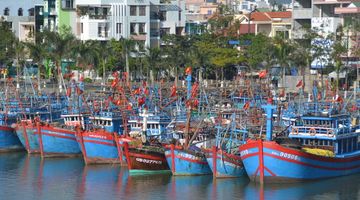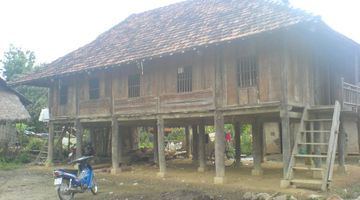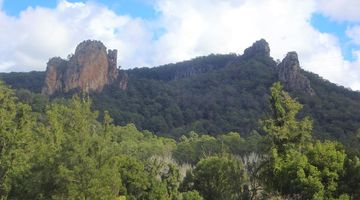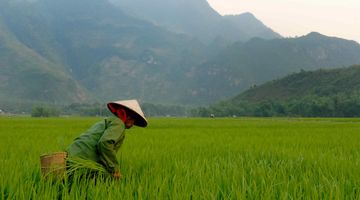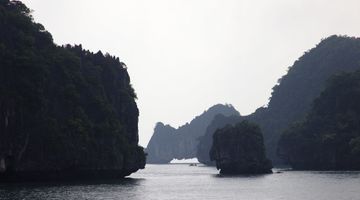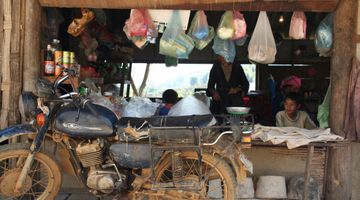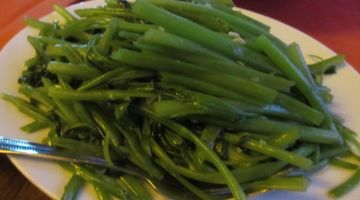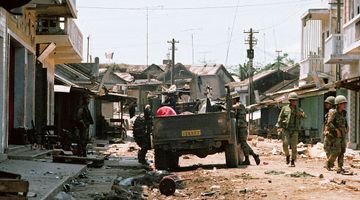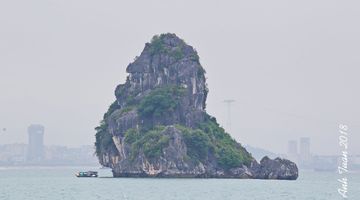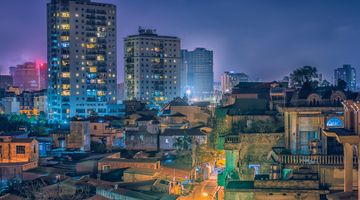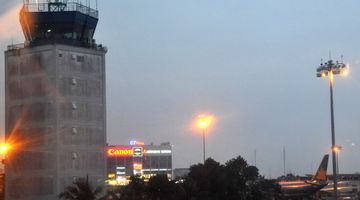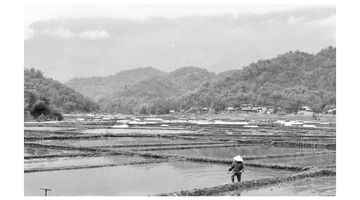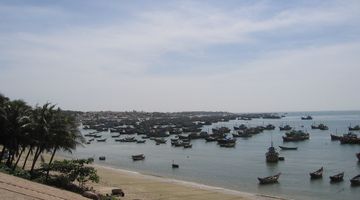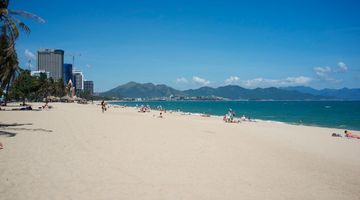Explore Vietnam with our friendly travel guide for 2024
What are the first things that come to your mind on mentioning Vietnam? We used to think about endless rice fields, pointed straw hats, and steaming pho bowls. You may as well dream about the thousand islands of Ha Long Bay or recollect the Vietnamese war veteran living next to you and buying you lollipops on Sundays.
And indeed, all of these images are very Vietnamese. Located in Southeast Asia, Vietnam is one of the most beautiful countries, filled with urban cities, UNESCO heritage sites, island bays, mountains, and caves.
Why should you visit Vietnam?
Vietnam has a lot to offer. From coffee and distinctive cuisine to warm and welcoming locals, not to mention its history. It stands out from Asian countries like Thailand or the Philippines. Vietnam is famous for its distinct blend of flavors, vibrant streets, and stunning natural beauty. Read our guide to know more about Vietnam’s unique places and things to do.
What is the best time to visit Vietnam?
In a country with more than 1,600 km, the weather varies considerably as you go from North to South Vietnam. The typhoon season, when things get a bit stormy, lasts from May to November. But if you're looking for the sweet spot, March to April is the best time to visit. So, plan your trip around this period, and you'll likely dodge the raindrops like a pro.
North Vietnam
The north of Vietnam experiences cold winters from December to February, with the lowest temperature of 5-10°C.
Center of Vietnam
The Summer season in the central part of Vietnam lasts from January until August. The weather is hot and dry, with temperatures between 22°C and 36°C.
South Vietnam
Down in South Vietnam, it's all about that warm and welcoming vibe throughout the year – no need to worry about chilly days. The rain likes to join the party from June to November. For the prime experience, aim for a visit between November and April. That's when the weather shows off its best side, giving you the perfect backdrop for a memorable trip.
How to get to Vietnam?
When planning to travel to Vietnam, most travelers also include beautiful nearby countries, like Laos, China, or Cambodia, in their itineraries. You've got loads of options, from scenic train rides to zippy flights, making it a breeze to explore not just Vietnam but all those awesome neighboring spots. Transportation in Vietnam is diverse and includes various options to explore the country and its neighboring destinations seamlessly.
Traveling by plane
There are lots of ways to get to Vietnam. You can take direct flights with international airlines – Noi Bai International Airport in Hanoi (HAN) and Tan Son Nhat International Airport in Ho Chi Minh City (SGN) are the hotspots for that. Then, there's Danang International Airport in Danang (DAD), a bit quieter but still doing its thing with flights to some Asian spots.
Instead of going straight to Vietnam, catch flights with layovers in places like Bangkok, Singapore, or Hong Kong. It can save you some cash! If Vietnam is on your radar, check out those flight prices ahead of time. And if you're already exploring Asia, there are direct flights starting at just 50 bucks for a one-way ticket.
Bangkok to Hanoi
Singapore to Ho Chi Minh
Bali to Ho Chi Minh
Manila to Ho Chi Minh
Traveling by Train or Bus
Hopping on a train is one of the coolest ways to see Vietnam. It's safe, super convenient, and lets you soak in the countryside views. Plus, you can zip to almost all the must-visit spots, and bonus, it's often quicker than the bus.
There are even trains that whisk you across borders to Cambodia, China, and Laos. Vietnam has a whole railway system with different types and classes of trains. Basic, no-frills "hard seat" and "hard sleeper," or if you're feeling a bit fancy, there are the "soft seat" and "soft sleeper" grades. Some trains even crank up the luxury with air conditioning, private cabins, and swankier amenities.
In Vietnam, there are three main types of train carriages :
1st Class Sleeper: The highest class with 7 cabins of four berths each, providing pillows, sheets, and reading lights. It's relatively comfortable for sleeping, and there's storage space under the bottom bunk.
2nd Class Sleeper AC: Similar to 1st Class, but with 6 hard berths in each cabin
2nd Class AC Seats Only: These are soft seats, similar to well-used airplane seats. Luggage space is limited, and tickets may include sitting on small stools in the aisle.
One of the only popular places unreachable by train is Dalat in the central highlands, which one can get to by bus or plane.
Traveling by Ferry, Boat, or Cruise
For all island hoppers or coastal explorers, Vietnam is totally reachable by boat or ferry! They have neat ports and marinas all set up for international travelers. Think of places like Da Nang or Nha Trang – they're like the welcoming doorways to Vietnam by sea. So, if you're up for a bit of an aquatic adventure, sailing into Vietnam might just be your kind of entrance.
Vietnam is a hotspot for cruise enthusiasts! Picture this: cruise lines setting sail with awesome itineraries that stop at Vietnamese gems like Ha Long Bay, Da Nang, Nha Trang, and Ho Chi Minh City.
You can hop off the cruise and explore places like Hoi An, Phu Quoc Island, and the Mekong Delta. It's like a floating adventure that goes beyond the ports.
These cruise trips in Vietnam can be shorter than you think. Some are quick day trips, while others let you enjoy the sea breeze all night long.
Where to go in Vietnam?
As a first-time visitor, you are almost inevitably bound to land in either Hanoi or Ho Chi Minh City. Hanoi was our first port of call with Ho Chi Minh following immediately after. These two amazing cities are eternal favorites with great accommodations options and other good infrastructure geared towards travelers’ needs, both having great transport connections with all the major destinations throughout the country and mouth-watering cuisine from every corner of the country.
Vietnam popular routes include the classic Hanoi to Ho Chi Minh City route, which takes you from the bustling capital in the north to the vibrant southern metropolis, offering a comprehensive glimpse into Vietnam's diverse regions.
The enchanting Ha Giang Loop in the northern mountains is a favorite among adventure seekers, winding through picturesque landscapes and ethnic minority villages. The coastal journey from Hue to Hoi An is renowned for its ancient architecture, pristine beaches, and the scenic Hai Van Pass, providing a perfect blend of history and natural beauty.
Best places to visit in Vietnam
Hanoi
For us, Hanoi remains the city of the iconic red bridge over the lake, narrow streets of the Old Quarter, and strange lotus seed beverages. It is actually one of the most stereotypical ‘Asian’ cities, with a huge array of sounds, smells, and sights overwhelming any first-time visitor.
Centered around Hoan Kiem Lake, the old town is easily discovered on foot, whilst the lakefront gardens are a peaceful haven to escape the madness of the city’s streets.
Hanoi is very lively at any time of the day. At night, explore the old quarter with its bars and clubs. Hanoi is a good base for excursions to Ha Long Bay, and Sa Pa, and the northern mountains, where you can sample life in rural Vietnam.
Places to visit in Hanoi
Visit the Ho Chi Minh Mausoleum and the former Hoa Lo Prison (nicknamed the Hanoi Hilton by American POWs) which offer insight into the country’s recent history.
Check out the Vietnam National Museum of Fine Arts. The museum showcases an extensive collection of Buddhist art, folk art, and exquisite silk artifacts.
Try Street Food. Hanoi is a food lover's paradise. Dive into the local culinary scene by trying street food in places like Bun Cha Huong Lien (featured in Anthony Bourdain's show) or enjoying a bowl of Pho at one of the many street-side stalls.
Spend a leisurely afternoon by the scenic Hoan Kiem Lake. You can stroll around the lake, visit Ngoc Son Temple on an islet, or simply relax and people-watch.
Where to go from Hanoi?
Hanoi to Ninh Binh starts from $6
Hanoi to Sapa starts from $8
Hanoi to Hue starts from $13
Hanoi to Da Nang starts from $17
Hanoi to Halong Bay starts from $28
Hanoi to Ho Chi Minh starts from $39
Ho Chi Minh
In Saigon (or Ho Chi Minh City), you'll find stunning French architecture from the 18th century, endless stalls selling the famed banh mi sandwich, and meticulously landscaped parks with temples and palaces.
Resembling a European city with a dominating skyline but a wide variety of cultures co-existing under the surface, Hi Chi Minh City seems a world away. For anyone looking to understand more about the nation’s fierce patriotism and recent history, the city’s War Remnants Museum is a must-see. The somber yet compelling exhibitions on the wars with France and the US, including the human and environmental impacts of these conflicts, leave a lasting impression.
When it comes to sightseeing in Ho Chi Minh City, there's an abundance of cultural things, like Ben Thanh Market, Notre-Dame Cathedral. Immerse yourself in history at Independence Palace, marvel at French colonial architecture at the Central Post Office, and enjoy panoramic views from the Bitexco Financial Tower Sky Deck.
If you are interested in day trips from Ho Chi Minh, consider going to Cai Be Floating Market or Can Gio Mangrove Forest. This UNESCO Biosphere Reserve is a haven for diverse wildlife amidst green mangroves.
Where to go from Ho Chi Minh City?
Ho Chi Minh City to Nha Trang starts from $13
Ho Chi Minh to Da Nang starts from $24
Ho Chi Minh City to Phnom Penh starts from $25
Ho Chi Minh City to Siem Reap starts from $48
Ha Long Bay
You may be lucky to hit the best weather while visiting Ha Long, but even with the rain, the bay dotted with countless islands looks terrific – it was raining cats and dogs during our first visit in August, but we still enjoyed the trip. Ha Long Bay can be reached directly from Hanoi, either with a tour or independently, or from Vietnam’s third largest city, Haiphong.
The UNESCO World Heritage sight consists of almost 2,000 islands that remain best absorbed through an overnight boat cruise. Take an overnight trip out of the city to Halong Bay, the most sensational and unique seascape.
When selecting a Halong tour, prioritize one that provides a comprehensive itinerary, ensuring you witness the mesmerizing limestone karsts, navigate through emerald waters, and explore charming fishing villages.
How to get to Ha Long Bay?
The most common way to get to Ha Long Bay is by road. It's about 4-hour drive from Hanoi to Ha Long City. You can take a local bus or rent a car. Whether you decide to soak in the local vibes on a charming bus ride or savor the freedom of steering your own adventure with a rented car, the road to Ha Long Bay isn't just a journey — it's a promise of breathtaking landscapes along the way and the excitement of discovering one of Vietnam's most magical natural wonders once you arrive.
Sapa
A trekking lover’s paradise, Sapa is a major city in the far North of Vietnam. The stunning countryside and the chance to meet the region’s indigenous people do draw here quite a lot of tourists, but regardless the fact, Sapa somehow remains the surprisingly atmospheric place to explore with that rare feeling of being ‘out of the beaten track’.
Things to do in Sapa
Trekking is the main activity here and a highlight of many tourists’ stay. It can get chilly so ensure to bring warm clothes. Excellent treks are also available in Bac Ha , but the town’s biggest attraction is the Sunday market which brings thousands of locals, many women in traditional dress, to trade the region’s famous produce.
Where to go from Sapa?
Sapa to Hanoi starts from $8
Sapa to Lao Cai starts from $3
Sapa to Bac Ha starts from $3
Sapa to Mu Cang Chai starts from $11
Ninh Binh
Just a scenic 90 kilometers away from Hanoi, Ninh Binh beckons to travelers seeking the enchanting natural beauty of Vietnam. Fondly called the "Halong Bay on land," it boasts captivating karst landscapes and meandering waterways. This region, once Vietnam's inaugural capital, now stands as a UNESCO World Heritage Site, adorned with mossy pagodas, dramatic limestone karsts, and dreamlike scenery.
As you explore Ninh Binh, don't miss a visit to Bai Dinh Pagoda. This colossal complex proudly holds the title of Southeast Asia's largest Buddhist temple. It's not just a sightseeing adventure; it's an invitation to immerse yourself in the rich history and serene beauty that defines this gem in Vietnam.
Where to go from Ninh Binh?
Ninh Binh to Hanoi starts from $8
Ninh Binh to Sapa starts from $13
Ninh Binh to Dong Hoi starts from $22
Ninh Binh to Dao Cat Ba starts from $11
Where to go if you like...
The imperial heritage, eternal spring, or beach holidays local style? You can find it all in Vietnam, too!
Nature
Danang is the largest city in Central Vietnam and a great base from which to explore the central region. The area’s best beaches are to the East of the center, including the famous China Beach (My Kye). The city becomes very hot and dry during the summer, with temperatures hitting 40°C and tropical storms common in October and November. Just outside the city center lies the Marble Mountains, the largest of which is Thuy Son, where you can find Am Phu Cave, a series of caves depicting a Buddhist re-imagining of hell.
Marble Mountains (about 10 km from Da Nang, about 20 km from Hoi An) - “mountains of 5 elements” - is a complex of 5 hills, each of which has the name of one of the elements in the eastern horoscope: water, earth, wood, metal, and fire. The largest one is Mount Water. Here you can explore caves with pagodas, climb to platforms, and admire the view of the city.
Things to do in Da Nang
Discover Ba Na Hills and hop on the cable car, one of the planet's lengthiest non-stop single-track rides, treating you to awe-inspiring vistas of the surroundings. Explore the Marble Mountains, a collection of five hills sculpted from marble and limestone, hiding caves and tunnels with a stunning coastal view.
Lounge at My Khe Beach, known for its pristine white sand and crystal-clear blue waters, creates an ideal setting for aquatic pleasures. Marvel at the Dragon Bridge, the Da Nang symbol that transforms into a captivating spectacle when night falls. Find an adventure at the Son Tra Peninsula, home to the Linh Ung Pagoda and the majestic Giant Lady Buddha statue, offering unparalleled city views.
Where to go from Danang?
Danang to Hoi An starts from $3
Danang to Nha Trang starts from $16
Danang to Hue starts from $17
Danang to Hanoi starts from $21
The beach town of Nha Trang is hugely popular in summer, so worth booking ahead at this time. The area is best avoided between October and December when the monsoon season makes it difficult to access the excellent diving spots.
Nha Trang does not sleep at night. The city is densely packed with skyscrapers shops, malls, business centers, rooftop nightclubs, and luxury hotels. At the same time, there are breathtaking mountains, the sea, waterfalls, and grottoes.
The town is a great spot to relax for a few days but always leave your valuables in the hotel safe as although the town is generally safe for tourists, petty crime at the beach can happen sometimes.
Tran Phu Beach, the town's main beach, is a seven-kilometer stretch of pristine sand with crystal-clear water surrounded by rustling palms, colorful beachside bars, and seafood restaurants.
Ba Ho Waterfall is a hidden gem for nature lovers and adventure enthusiasts in the Nha Trang area. You can find some cliff diving spots for those who want an adrenaline rush.
Vinpearl Land amusement park is one of the hallmarks of Nha Trang. Cho Dam is the largest local market. You can buy almost everything here.
The low-key charms of Phan Thiet – and its fresh cheap seafood – attract hordes of local tourists, but the main draw point in the area is definitely Mui Ne, the kite-surfers capital of the world.
Islands
Vietnam may not be the first SEA country that comes to your mind when you are searching for tropical paradise islands. Not yet, at least. Check these island destination before the hordes of tourists come!
Although closer to Cambodia, the most famous Vietnamese island is Phu Quoc island, which has idyllic beaches, the best of which is Sao Beach in the South East. There are also good diving and snorkeling opportunities around the island. As this is a fairly small island and a popular tourist destination, booking ahead is highly recommended.
The island of Phu Quoc is where beach worshippers come to pray. Lapped by jewel-blue waters and edged by fine sandy beaches, this is a place to slip into low gear, reaching for a cocktail as the ember-colored sun dips into the bay.
But it’s far from undiscovered – local tourists come in droves for theme park thrills at VinWonders and giddying views over the sea from the world’s longest over-sea cable car. Phu Quoc is a popular stop for families, and if you fancy a change from the tourist scene, there are dense jungles to explore inland from the sand.
Phu Quoc things to see
Relax on Long Beach, one of the island's biggest beaches, with soft golden sand. Look into the Vinpearl Safari and Conservation Park, home to elephants, giraffes, and white lions.
Dinh Cau Night Market offers authentic Vietnamese cuisine and fresh seafood. Explore Phu Quoc National Park's diverse flora and fauna. Hike up to the Suoi Tranh Waterfall.
Visit a fish sauce factory to learn about the production of the island's famous nuoc mam (fish sauce), an essential ingredient in Vietnamese cuisine.
The Con Dao islands may be the former home of a prison but they offer some of the best snorkeling in Vietnam and if you're lucky, you may spot a turtle. The majority of the islands are covered in thick jungle so it is possible to combine trekking with a beach break.
Anyone looking to escape the crowds on the mainland may wish to discover islands such as Hai Tac and Nam Du, where it is still possible to enjoy some of the country’s best beaches all to yourself.
Heritage cities
Hue, the former imperial capital, the magnificent Imperial Citadel. A huge series of palaces, temples, and gardens used to be home to the Nguyen dynasty and are well worth spending a day exploring. Another day can be spent visiting the nearby tombs of past emperors. Closer to temples or palaces than tombs, these are best accessed by boat or bicycle.
Hoi An is a paradise for those who love food or shopping, its charming lantern-lit streets are filled with stalls selling food and crafts. When it gets dark, the city takes on a new beauty. At sunset, the entire town is illuminated by Chinese lanterns. You can rent a boat and spend the evening cruising around the beautiful, cozy city.
Things to do in Hoi An
The ancient Cham ruins at My Son, a UNESCO World Heritage site from the 4th century, are easily accessible for a day trip. Don’t forget to visit Hoi An coconut village. Prices for riding a basket boat in Hoi An can vary from 5 – 10 USD per person. The duration is usually about 40-55 minutes.
If you are looking for a fun experience in Hoi An, look no further than Cam Thanh Coconut Village, located 5 kilometers from Hoi An center. Sitting in a circular boat weaving through the green coconut grooves and enjoying the fresh air.
This was a traditional way to transport goods in the past. This type of transport was invented as a way to escape the boat taxes enforced by the French. Here you can try cycling, fishing, cooking, and so on.
Where to go from Hoi An?
Hoi An to Danang starts from $9
Hoi An to My Son starts from $33
Hoi An to Hue starts from $7
Hoi An to Phong Nha starts from $12
The town of Dalat is situated in the Southern countryside and has a distinctly European feel. The French escaped the heat here, and it remains a popular destination for Vietnamese.
Dalat is the most waterfall-rich mountain region in Vietnam. If you want to enjoy the road to Da Lat, choose the route from Phu Tho. Picturesque serpentine road, with all kinds of plantations, and landscaped mountains.
Things to do in Dalat
More laid-back than many other parts of Vietnam, there is plenty to do in the nearby hills , including the stunning cable car to Thien Vien True Lam Monastery. Although the town is usually warm and dry, it can become cooler at night.
In the Dalat district you can climb the high mountain Lang Biang, locals call it “the roof of Dalat”.
Outdoor Adventures
Vietnam has 30 national parks located mainly in the north and the south, with only 7 of them found in the narrow central part of the country. Featuring abundant wildlife, and some of the most imposing caves in the world, national parks in Vietnam are the ultimate destination for caving, trekking, biking, canoeing, and much more.
Probably the best place in the country for bird watching, Cuc Phuong, Vietnam’s first and largest national park, remains a well off-the-beaten-path destination. Though it is possible to visit as a day trip from Hanoi, we recommend staying in the park for a couple of days. There are even more spectacular vistas of karst mountains around Tam Coc village in the province of Ninh Binh, home to Cuc Phuong NP.
Hiking and canoeing are probably the two most popular activities people come for to Cat Tien, easily reachable from Ho Chi Minh City. The park boasts an astonishing bio-diversity and is kept in great condition.
Located close to Hoi An, Cham Island is the greenest place in the country and well worth a short boat trip, although best avoided between September and April when weather conditions can make access difficult.
What to do in Vietnam?
Whether you seek the serenity of ancient temples, the thrill of outdoor adventures, or the vibrant energy of bustling markets, Vietnam offers a myriad of activities to captivate every traveler.
Here are some of the things to do in Vietnam:
Visit Incense Village
The ancient art of crafting incense comes to life in the charming and fragrant Incense Village of Vietnam. Tucked away in the heart of the country, this village, often concealed within lush surroundings, showcases timeless artisanal skills.
As you wander through the slender pathways, the air is filled with the calming scents of carefully made incense sticks, each a masterpiece in its own right.
Certain villages in the northern province of Quang Phu Cau, close to Hanoi, are renowned for their incense-making legacy.
Moreover, in the central and southern regions of Vietnam, there are areas where incense production plays a significant role in the local economy.
Try Traditional Coffee in Vietnam
As a major player in the global coffee export scene, Vietnam stands out not only for its vast coffee production but also for the widespread popularity of the beverage. The majority of coffee plantations thrive in the Da Lat region, contributing to the nation's rich coffee culture.
In line with Vietnamese customs, coffee is commonly served as exceptionally potent and generously sweetened. Traditional Vietnamese coffee relies on Robusta beans, renowned for their intense and bitter taste. The distinctive roasting of the coffee beans along with rice, a touch of salt, wine, and butter.
Vietnamese coffee boasts a unique style, showcasing inventive twists like the addition of yogurt, eggs, and even fruit.
Here are some must-try coffee variations for all the coffee enthusiasts out there:
-
Egg yolk coffee. After the war, when milk was scarce, Hanoi residents wanted to add something to their coffee to ease the spiciness. Inexpensive egg yolks turned out to be the perfect alternative. Now, this is a signature drink of Hanoi that is definitely worth trying, especially during the winter months.
-
Yoghurt coffee, also called "cà phê sữa chua " is a liked and distinct coffee variation, in Vietnam. Yogurt was initially introduced to Vietnam by the French and has become a part of the culinary heritage. Traditional Vietnamese Yoghurt Coffee usually includes a layer of sweetened condensed milk or sweetened yogurt, at the base of the glass topped with drip coffee.
Attend a water puppet show
Water puppetry as an artistic form has been practiced in this country for thousands of years. The dolls are carved from wood and appear to move on water. An unusual cultural experience will cost from €5 per person.
Here are some great locations to experience this traditional art form in Vietnam:
• Thăng Long Water Puppet Theatre, Hanoi.
• Vietnam Puppet Theater.
• Hội An Theatre.
• Huế Water Puppet Theater..
• Golden Dragon Water Puppet Theater.
• Museum of Vietnamese History (outdoor)Take a boat tour to visit the Mekong Delta
Taking a boat tour in the Mekong Delta is a popular and highly recommended activity for visitors to Vietnam. The Mekong Delta is a vast network of waterways, swamps, and islands in southern Vietnam, and it offers a unique and picturesque landscape to explore. Here's what you can expect when you take a boat tour in the Mekong Delta.
One of the highlights of a Mekong Delta boat tour is the opportunity to visit floating markets. These markets, such as Cai Rang and Cai Be, are where local farmers and traders gather to buy and sell their goods directly from boats. It's a vibrant and colorful experience that provides insight into the local way of life.
As you cruise along the delta's waterways, you'll be treated to stunning views of lush green rice paddies, fruit orchards, and traditional stilt houses. The serene beauty of the delta is a photographer's dream.
Many boat tours include stops at local villages, where you can interact with residents, learn about their traditions, and sample local products like tropical fruits, honey, and coconut candy.
Celebrate Lunar New Year (Tet) in Vietnam
Vietnamese New Year (“Tet”) coincides with the Chinese one and is the most important and popular holiday in the country. The Vietnamese, like Europeans, celebrate it with their families, but not at home. Everyone who can afford it escapes the heat and goes to the mountainous Dalat or further north during the New Year holidays.
Visit Lly son Island
Lý Sơn Island, also known as Cu Lao Ré, is a captivating destination located off the coast of Quảng Ngãi Province in central Vietnam. Known for its pristine beaches, crystal-clear waters, and volcanic landscapes, Lý Sơn offers a unique and tranquil escape.
Here you can hike or take a motorbike ride to the top of Thoi Loi Mountain for panoramic views of the island and its surrounding turquoise waters.
Visit Dinh Pagoda, a significant cultural site on the island, offering a peaceful atmosphere for contemplation and exploration. Explore the garlic fields that cover much of the island. Lý Sơn is renowned for its high-quality garlic, and you can witness the local farming practices. Relax on An Binh Beach, a tranquil stretch of golden sand with clear waters, perfect for unwinding and enjoying the serene coastal surroundings.
Vietnamese Food
Vietnamese people are very proud of their nationality and culture and will be very grateful for any attempts to learn more about the country, they are especially proud of their cuisine.
Vietnam’s national dish is pho, a beef or chicken soup with noodles, which is available almost everywhere you look. The country has a wide variety of food suiting all tastes and diets.
The Vietnamese are one of Asia’s biggest beer drinkers, largely due to the presence of bia hoi (very cheap homemade ‘air beer’) on many street corners across the country.
Vietnamese cuisine is quite interesting and rich in seafood. Vietnamese dishes are known for their exciting flavors and diverse dishes. The wonderful world of Vietnamese cuisine includes popular dishes like Vietnam Noodle soup (Pho) and Vietnam spring rolls (Goi Cuon).
Pho Bo
Pho Bo is a Vietnamese beef noodle soup featuring a fragrant beef broth, rice noodles, and various cuts of beef. It's garnished with fresh herbs and condiments, offering a flavorful and comforting experience.
Sandwich Bahn Mi
Banh Mi is a Vietnamese sandwich fusing a French baguette with a medley of fantastic fillings like grilled meats, pickled veggies, fresh herbs, and flavorful condiments. This delightful blend of tastes and textures offers a tasty sneak peek into Vietnam's diverse and enticing food customs.
Bun Rieu
Bun Rieu is a classic Vietnamese noodle soup featuring a tomato-based broth with crab or shrimp, tofu, and pork. Served with vermicelli noodles, fresh herbs, and condiments, it's a flavorful and hearty dish popular throughout Vietnam.
Vietnamese egg roll
Vietnamese egg roll, also known as "Chả giò" or "Nem rán," is a popular dish featuring crispy, deep-fried rolls filled with a flavorful mixture of ingredients. These rolls typically contain a combination of seasoned ground meat (often pork or shrimp), vermicelli noodles, wood ear mushrooms, and various vegetables. Once fried to a golden crisp, Vietnamese egg rolls are commonly served with dipping sauces, providing a delicious and satisfying culinary experience.
Must-see attractions in Vietnam
There are plenty of things to see in Vietnam. Some must-visit places for sightseeing in Vietnam include:
Old Quarter
Hanoi’s lively comprises nearly 40 streets packed with shops selling various goods, each street named for its primary good or service. The architecture in the Old Quarter reflects a mix of styles from different periods, including French colonial influences. Wandering through the narrow streets allows visitors to appreciate the unique blend of traditional Vietnamese and colonial-era architecture. One of the distinctive features of the Old Quarter is its layout, with nearly 40 streets, each named for its primary goods or services.
This reflects the historical commercial specialization of different areas, making it an intriguing place to explore.
Halong Bay
Characterised by towering karst limestone pillars and small islets of various shapes and sizes amidst crystal blue waters, Halong Bay's ethereal beauty is a sight to behold.
Located in northern Vietnam, it is the most popular tourist spot on this side of the country. The best time to visit Halong Bay is from April to September. How to visit Ha Long Bay? Located in northeastern Vietnam, Ha Long Bay is a four-hour drive from Hanoi, and you can easily reach this destination with a private vehicle or a coach tour.
Cu Chi Tunnels
On your guided tour of the Cu Chi Tunnels, you’ll learn about the history of this underground system. The tunnels were dug during the Vietnam War by Viet Cong soldiers as a way to move undetected and launch surprise attacks.Experience the tight squeeze firsthand by crawling through the tunnels, and firing assault rifles at the shooting range after. Pack bug spray and dress for hot and humid weather, arriving earlier in the day to beat the crowds and the afternoon sun. It's not recommended to visit the tunnels after a downpour, as the area will get very muddy.
Detian Waterfall
Tumbling down three tiers, surrounded by enchanting karst peaks, the Detian Waterfall (Virtuous Heaven Waterfall) is one of the most beautiful waterfalls on earth. Also known as Ban Gioc Waterfall, meaning ‘halfway across’ in Vietnamese, the falls lie on the border between China and Vietnam, making it the second largest transnational waterfall in the world.
Measuring over 200 meters wide, with a drop of more than 70 meters, the sight of the Detian Waterfall is truly awe-inspiring, and you can hear its thundering cascades before it even comes into view. You can take a bamboo raft around the base of the falls for an unforgettable close-up encounter.
Mui Ne Sand Dunes
On the southern coast of Vietnam, you’ll find the country’s very own Sahara Desert. The striking red and white sand dunes have built up over time as waves and winds carry the sand inland. The dunes form a barrier against storms and beach erosion and provide a habitat for endangered plant and animal species.
The White Sand Dunes are a vast, ethereal expanse and are absolutely stunning at sunrise, while the Red Sand Dunes are made up of coppery rolling hills that radiate at sunset. There’s also a gorgeous Grand Canyon-esque Fairy Stream, flanked by lush greenery and dazzling sand dunes.
When to visit the Mui Ne Sand Dunes? Mui Ne is one of the driest places in Vietnam, so you’ll enjoy pleasant weather all year round. For the best surfing and beach conditions, visit Mui Ne between December and April. How to visit the Mui Ne Sand Dunes? You can reach the dunes with a four-hour drive in a private vehicle from Ho Chi Minh city. If you’d like to spend more time at the dunes, you can stay in the nearby Mui Ne fishing village, lined with a stunning golden sand beach, famed for kite and windsurfing.
Phong Nha-Ke Bang National Park
Home to the world's largest cave, Son Doong, this park is a UNESCO World Heritage Site that offers incredible caving and hiking opportunities. Nestled in the Annamite Range, this park is renowned for its stunning karst landscapes, extensive cave systems, and rich biodiversity.
Unveil the mysteries of Son Doong Cave, the largest cave in the world, which boasts colossal chambers, underground rivers, and unique formations. Adventurous travelers can embark on guided tours to explore its otherworldly beauty.
A noteworthy spot in Vietnam is the Cao Dai Temple, built in the 1930s. Caodaism, a distinctively Vietnamese religion, draws inspiration from Confucianism, Buddhism, Taoism, and even Roman Catholicism.
Within the main structure of the Cao Dai Temple, four prayers are held each day, and guests can observe or join in the rituals. Besides the temple, adorned with captivating murals, the site includes various dwellings, administrative edifices, and even a hospital.
Ba Be Park
Tranquil Ba Be National Park is linked with the three Ba Be Lakes at its heart, rimmed by jagged karst peaks and thickly forested slopes.
Most visitors come here to take peaceful boat trips or kayak on the lake and explore the caves full of stalactites and stalagmites in the vicinity. There's also excellent hiking and trekking in the hills here between ethnic places. This is one of the most peaceful spots in Vietnam, and travelers who spend the night here sleep in traditional stilt-house homestay accommodation along the lakeshore, allowing an experience of simple rural life.
What to Wear in Vietnam?
In Vietnam, you can wear what makes you feel comfortable. Vietnamese people are fine with Western clothes, especially in Ho Chi Minh city. The North is a bit more traditional.
Don't forget to snag a travel jacket! You never know when you might encounter a chill or a surprise rain shower in some areas. It's the perfect way to stay cozy and prepared for whatever the weather throws your way.
FAQ
- How many days do I need in Vietnam?
2 week itinerary in Vietnam is a great way to explore many of the country's highlights, but the number of days you need can vary depending on your interests and the specific places you want to visit. To visit all the popular places you may need about 18-22 days, but you can adjust the number of days you spend in each place based on your interests and preferences.
- What is the best month to visit Vietnam?
For a favorable experience, consider heading to Vietnam between November and April, which is the dry season. This timeframe generally provides pleasant weather, making it suitable for exploring various parts of the country. Remember, though, that Vietnam's climate can differ depending on the region, so tailor your visit to the specific places you aim to explore.
- What is the daily budget for Vietnam Travel?
Budget: $20 - $40/day for hostels, street food, and public transportation.
Mid-Range: $40 - $100/day for mid-range hotels, a mix of dining, and tours.
Luxury: $100+ per day for luxury accommodations, dining, and upscale activities. Prices differ by region and choice.
- What are the visa requirements for visiting Vietnam?
You must have a valid passport and a visa (or pre-approval for a visa on arrival) to enter Vietnam. You can apply online for an eVisa for tourism or business purposes. Tourist and Business Visas: Longer stays or multiple entries require embassy applications. Check official sources for current rules.



















